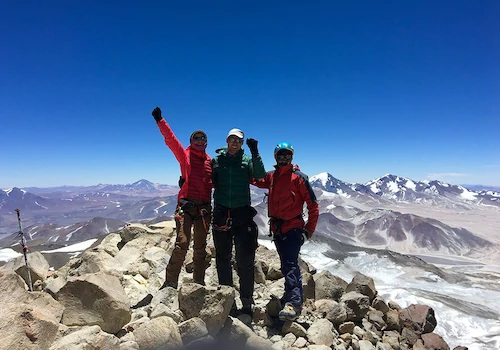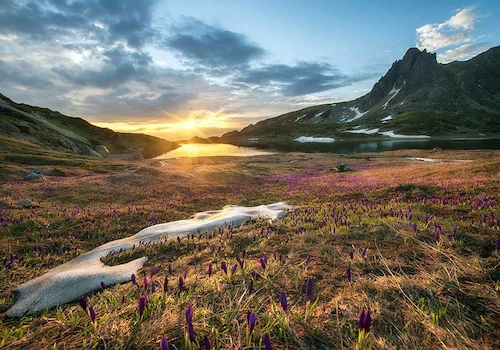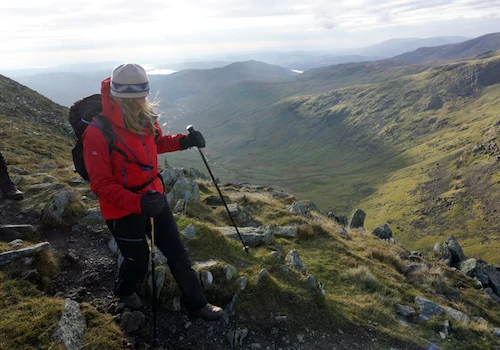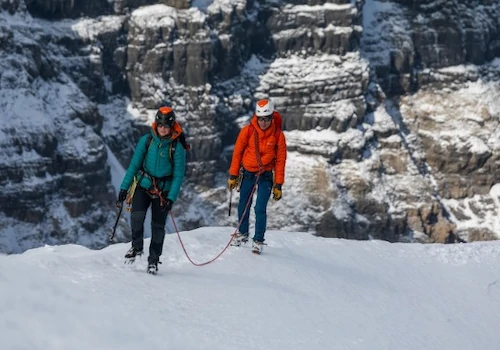
- Expeditions
By Region
By Month
By Grade
By Height

- Treks
- UK & Alpine
- Schools
- Hire
- News
- Shop
- Contact
A world of legendary peaks and rich culture — explore Nepal’s finest climbs with expert support and unforgettable views.

No matter what you're looking for in Nepal this Autumn—snowy peaks, more technical climbs, or unforgettable mountain views—we have an expedition that’s perfect for you. Choosing the right trip can feel overwhelming with so many incredible options, but it all comes down to what you're looking for: a more technical climb, a higher peak, the duration of your journey, or the level of experience you bring. We’re here to help you find the adventure that's best suited to you. If you don't have the necessary skills this year then perhaps you can look at one of our Scottish Winter Courses to get you the skills for next year!
Annapurna IV - Altitude 7,525m - Grade: 3D

If you are looking for a more technical 7000m peak then Annapurna IV would be a great choice. You should already be climbing at Scottish grade II winter routes, Alpine AD- routes.
Although not far from the Annapurna Circuit this mountain feels very remote and often we are the only team or one of a very small number of teams on the mountain.
This climb will require four camps to be set above Base Camp.
To reach camp 2 we follow a ridge over rock and ice which may require up to 1000m of fixed ropes with some stretches of steep climbing.
From camp 2 to camp 3, the ground moderately steep as we zig zag up a broad ridge to camp below the steep summit face. From camp 3 the ridge is long, but at a relatively easy angle. We will use this camp to break up the distance on the ridge for the summit push.
Alternatively Himlung Himal below gives you the option of a fantastic peak over 7000m but it is a relatively easier peak.
Himlung Himal - Altitude 7,126m - Grade: 3

Technically straight forward 7000m Peak with few objective dangers and is excellent preparation for Everest or another 8,000m peak. The route into Himlung Base Camp through Phu is quiet and has a very different feel and look to it than for instance the busier Everest Base Camp approach. The rock glows bright orange as you pass by beautiful waterfalls. On the mountain fixed lines are used. We place 2 camps on the mountain which reduces the length of summit night, giving a greater chance of success.
Ama Dablam - Altitude 6,856m - Grade: 5D

Ama Dablam with it's exposed ridges and steep drop-offs on both sides require you to have experience of Alpine AD routes and / or an ability to climb Hard Severe rock and Scottish grade II/III winter routes. It is definitely a climbers mountain. You must also be proficient in abseiling, again this is on exposed ground. From Ama Dablam you have views of Everest, Lhotse and Makalu to name but a few!
Kyajo Ri - Altitude 6,186m - Grade: 3C

If you're not quite ready for Ama Dablam but still want a more technical climbing peak then Kyajo Ri would be a good choice. Suitable for those who have climbed Scottish grade I/II or Alpine PD+. This is a much quieter peak than Ama Dablam, and often it's just us and one other team on the mountain. From Kyajo Ri basecamp we climb to the upper valley and its lovely Alpine lake followed the next day by a climb up to the Kyajo Glacier which lies just below the peak's South Col.
After a rest day we climb the rocky couloir with its boulders and rock steps and arrive on the pristine South Col. Starting at first light we make our way to the foot of the fixed ropes and make the exhilarating climb up the majestic series of snow ridges which finish perfectly on the summit.
Lobuche via Gokyo Lakes - Altitude 6,119m - Grade: 2B

Loubuche Peak gives a slightly less technical peak than Island Peak but is more technical than Mera Peak. The summit night is on fixed lines. The trek to Lobuche takes you up the Gokyo Valley to the beautiful turquoise Gokyo Lake and the additional peak of Gokyo Ri (5350m) before crossing the famous Cho La Pass (5420m). Lobuche is a beautiful mountain ideal for those people who have been on expeditions such as Elbrus, or have climbed in the Alps and are looking for their next expedition to tackle their first Himalayan Peak. You will need crampon skills and have abseiled before.
Mera Peak - Altitude 6,476m - Grade: 2B

Mera Peak, although the highest of the three peaks is the least technical. It has a short section of fixed line on the final part of the summit but this is more walking attached to a fixed rope than any climbing (such as on Island Peak). The trek in to Mera Peak is a stunning journey through the remote Hinku Valley in the Solu-Khumbu region. Unlike the busier Everest Base Camp trail, the route to Mera is more isolated, wild, and scenic.
This expedition can be extended to include the slightly more technical Island Peak (6189m) via a crossing of the Amphu Labsta Pass, returning to Lukla down the main Everest trail.
Island Peak - Altitude 6,189m Grade: 2B

Island Peak is more technical than both Mera Peak and Lobuche (but not as technical as Kyajo Ri). Summit day starts early from High Camp with a steady scramble onto the glacier as the first light of day appears. We rope up and follow a clear route that winds through crevasses, gradually leading to steeper ground. A sustained climb on fixed lines on a mix of rock and ice, brings us to the narrow summit ridge, where panoramic views of Lhotse, Nuptse, Makalu, Ama Dablam, and Baruntse await. During the summit push, you’ll be on fixed lines over more exposed terrain, and on the descent, you’ll need to abseil and manage anchor transitions independently with confidence.
Classic Everest Base Camp Altitude 5,554m

Both of our trips to Everest Base Camp fly to Lukla before descending to Phakding on our first trekking day. The next day we follow the Dudh Koshi Nadi River as we climb towards Namche. After Namche the routes split. On the Classic EBC we trek up to the Monastery at Tengboche before passing through many small sherpa villages with mountain views of one of the most beautiful peaks in the world; Ama Dablam as our backdrop. We arrive in Gorak Shep where we climb Kala Patthar for either sunset or sunrise views of Everest, a day to have the camera fully charged. Finally we arrive at Everest Base Camp, a fantastic reward for your efforts.
Ultimate Everest Base Camp Altitude 5,554m

After leaving Namche we take the higher trail towards Dole and Machermo before arriving at the turquoise blue Gokyo Lakes. Here we climb Gokyo Ri at 5340m. Then from Dragnag we have a long day as we head over the Cho La pass (5368m) this path is steeper and we may need micro spikes in the snow. The view as it opens out at the the top of the Cho La Pass is spectacular. After Dzongla we head back onto the main Everest Base Camp trail, to Gorak Shep and Kala Patthar, then to EBC itself We return to Lukla via the Classic EBC Route. If you have the extra time, the Ultimate EBC trek is absolutely worth the additional days and effort—but even the classic EBC route rewards you with breathtaking views!

About Carrie Gibson
Carrie Gibson has traveled on many of our expeditions including Everest North Ridge, Denali, Aconcagua, Kilimanjaro, Elbrus, Island Peak & Ama Dablam. Carrie is also the first British woman to summit Himlung Himal.





